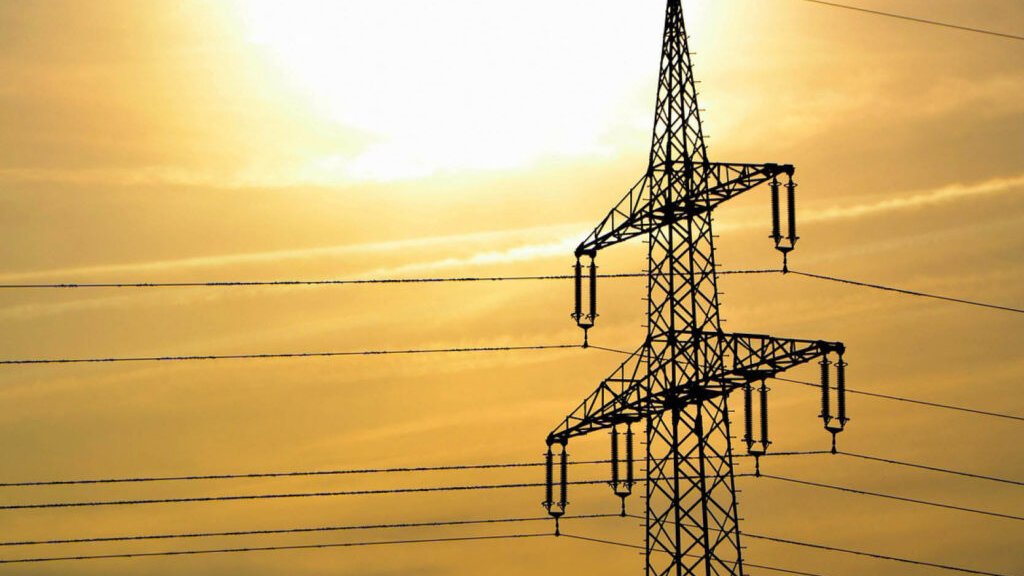
Energy policies in Luxembourg : efficiency, fairness and price
In the context of the International Energy Agency’s (IEA) regular review of national energy policies, IDEA had the opportunity to meet with representatives mandated by the Agency during their visit to Luxembourg.
The meeting provided a platform to present some views on the country’s energy policies and our remarks on ecological and energy transition.
Luxembourg is heavily dependent on energy imports, with nearly 95% of its energy coming from abroad (76% of the electricity consumed is imported). Its per capita energy consumption (183 GJ per person in 2023, compared to an average of 81 GJ for the 27 countries of the European Union[1]) and its CO₂ emissions per person are among the highest in Europe (10.6 tonnes of CO₂eq, just behind Ireland with 11.1 tonnes of CO₂eq), largely – though not exclusively – due to the sale of fuel to non-residents[2]. This situation is further exacerbated by strong population growth, while cross-border commuters account for half of the workforce, putting increasing pressure on infrastructure and resources.
This context confronts the country with the challenge of the energy triangle[3], which involve balancing three sometimes conflicting objectives : energy supply security, environmental sustainability and affordability.
Luxembourg has a unique energy and climate trajectory that is currently on the right track. Although greenhouse gas (GHG) emissions have fallen in comparison with 2005 level, the rate of decline has slowed down in 2024 : after a period of 4.3% increase in GHG emissions between 2015 and 2019, emissions began to decline with the Covid crisis in 2020. This decline continued in the following years despite a rebound in 2021 : the total reduction amounted to 2.4% between 2022 and 2023 and 1.8% between 2023 and 2024[4]. This slowdown in GHG emission reductions can be attributed to persistently high fuel consumption, despite the gradual expansion of renewable energy sources. The main reductions have occurred primarily in the transport sector, which continues to be the largest contributor to national emissions, while some sectors appear to be even more challenging to decarbonise (notably the energy production, manufacturing industry and construction).
Faced with rising energy costs in Europe, successive national governments have chosen to implement policies to support household budgets that benefit the entire population, with some measure specifically targeted to the most disadvantaged households (e.g. subsidized electricity and gas prices, subsidies for the installation of solar panels, heat pumps, the purchase of electric cars, etc. low-income households receive additional assistance such as increased subsidies and tax credits[5]). While these subsidies do increase purchasing power, they also benefit high-income households – representing a debatable public expenditure – as well as the largest consumers[6]. By subsidizing the cost of energy, the price signal is distorted and therefore the incentive to limit consumption is reduced. A more economically sound approach would involve capping subsidies at a defined consumption threshold and directing them more accurately toward vulnerable households and businesses, following the example of Germany’s ‘Preisbremsen’ scheme during the energy crisis, which subsided up to 80% of prior-year consumption[7].
This logic of broad-based incentives is also reflected in the policy promoting electric mobility[8], which has yielded some results : as of September 2025, electric and rechargeable hybrid vehicles accounted for 12% of the Luxembourg car fleet. When assessed in light of the ownership costs of combustion engine versus electric vehicles, the current subsidy scheme generally makes switching to electric more financially attractive for potential owners[9]. However, despite these positive signs, the ambitious target of increasing the share of electric vehicles in the fleet to 49% by 2030 now seems highly unlikely. Several factors help explain this gap : the still limited difference in total ownership costs, purchase prices that remain high even after subsidies, insufficiently differentiated taxation, and a lack of effective communication to convince potential buyers of the benefits of electric vehicles — beyond the environmental argument. The challenge of modal shift still seems to be unresolved, but the next national study on mobility will show the degree of progress made towards the objectives of the PNM 2035 plan. It is also important to focus on spatial planning, investment in public transport and active mobility infrastructures in Luxembourg (as well as in the neighboring regions), but also fiscal incentives for users, employers and municipalities should be considered by the government. For example, the introduction of a mobility budget that is broader than the company car could be one way of accelerating the transition to other means of transport[10].
In parallel, the carbon tax—now set at €40/tCO₂—contributes to gradually narrowing the fuel price gap with neighbouring countries, but it does not fully bridge the difference (a tax of €200/tCO₂ would be required to do so[11]). The planned implementation of the ETS 2 system in 2027—though it remains unclear whether Luxembourg will join or maintain its own carbon tax until 2030—could influence current dynamics and slow the gradual decline of fuel tourism. Given its significant contribution to national emissions, a clear and coherent strategy, taking into account potential carbon and fiscal leakages will be needed.
The development of renewable energy represents a genuine transformation of the European—and Luxembourgish—energy landscape. The updated 2024 National Energy and Climate Plan (NECP) now requires that 37% of gross final energy consumption come from renewable sources by 2030. As a landlocked country of 2,586 km2, Luxembourg is compelled to rely on cooperation agreements with other, better-equipped Member States to meet the EU’s expectations for renewable energy development. These cooperation agreements cost several tens of millions of euros annually, essentially for statistical transfers and Luxembourg’s participation in the expansion of renewable energy production capacity within the EU. At the same time, Luxembourg remains structurally dependent on its closest neighbours for energy consumption, both in terms of production and transmission. This highlights the relevance of a balanced approach between leveraging the territories with the highest renewable energy potential across Europe and tapping into local (and cross-border regional) production potential, which may be less efficient but serves broader goals of spatial planning, energy independence and resilience, and intra-European competitiveness.
Moreover, the return on investment for Luxembourg from these cooperation agreements will depend on its ability to support the development of electricity grid interconnections at the European level. Luxembourg will also need to maintain and strengthen the diversification of its cooperation strategies—both geographically and technologically—given the uncertain potential of certain technologies[12].
In this context, the energy triangle should serve as a compass to guide policy choices : the aim is to strike a balance between environmental sustainability (GHG emissions reduction, energy efficiency, biodiversity preservation, optimal resource use), security of supply (management of intermittent renewable sources, storage capacity, infrastructure resilience, digitalisation and cybersecurity), and economic efficiency (renewable energy costs, price volatility, infrastructure-related expenditures).
The energy and climate transition now also hinges on scaling up : the wave of early adopters is fading, and the challenge is to implement or maintain incentives while adjusting them based on their effectiveness and more precise social criteria. The goal is both to ease pressure on public finances and to support the expected acceleration in both demand and supply, including backing national and European industry.
The transition is entering a critical phase, under pressure from competing priorities that strain public budgets and influence public opinion. Alarming signs of a slowdown—or even an increase in emissions in certain sectors—must be considered alongside recent decisions to pause or roll back some policies. There is a noticeable shift from regulation and prohibition toward “positive” incentives (subsidies). For instance, while the previous legislature had planned to mandate non-fossil heating systems in new buildings, the current coalition has reversed this decision in favour of a solely incentive-based approach. The current trajectory and the remaining distance to meet the 2030 and carbon neutrality targets argue for an acceleration of measures, including the consideration of complementary disincentive or regulatory tools—less popular but necessary—to meet announced objectives within budgetary constraints. The guiding principle should be that today’s investments in the transition will help mitigate greater future costs (adaptation, energy dependence, social and health impacts, etc.).
[1] Source : Eurostat.
[2] Including fuel sales to non-residents.
[3] See, on this topic, the text by Tom Eischen : ‘Energy Transition : Challenges and Prospects for Luxembourg in the Face of the Climate Imperative,’ included in the IDEA collection : ‘Luxembourg’s Energy Transition Policies – The Climate Imperative under Multiple Constraints,’ January 2025.
[4] Effort sharing regulation’s perimeter. Source : Portail de l’environnement.
[5] For example : enhanced and targeted energy subsidies for recipients of the cost-of-living allowance (among the measures under consideration, the energy subsidy, currently ranging from 200 to 400 euros, will be tripled in 2025). Source : Le Quotidien, “ Les aides énergétiques pour 2025 (dé)chiffrées “ August 31, 2024.
[6] See on this topic : IDEA, « Prix de l’énergie : concilier des objectifs contradictoires », December 2022.
[7] The mechanism was implemented on January 1, 2023, and ended on December 31 of the same year. Although generally well received, it was not without criticism : introduced late, considered complex by businesses, and lacking more precise social targeting, as it benefited all households regardless of income.
[8] Including also the incentives for the installation of charging point.
[9] See on this topic : IDEA, « Avis Annuel 2025 : Déboussolés », « Objectifs, incitations et réalité du marché de l’électromobilité au Luxembourg ».
[10] See on this topic : IDEA, « Une incitation fiscale à la mobilité durable », November 2023.
[11] See on this topic : IDEA, « Une taxe carbone de 200 euros au Luxembourg ? », December 2023.
[12] For more information regarding the targets for renewable energy development and statistical transfers, see : “Avis Annuel 2025 : Déboussolés” and “100 millions d’euros pour des statistiques… et aider la souveraineté énergétique européenne”
More information : https://www.fondation-idea.lu/























